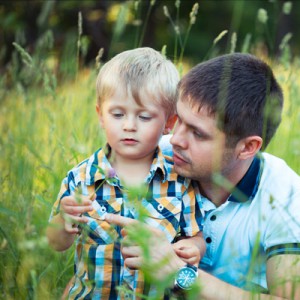This is a challenging and compelling question, and one that researchers have been working hard to answer! Scientists now believe that autism is the common end result of both genetic (hereditary) and environmental factors. It is clear that there is no single cause of autism for all children. More than likely, we will come to find that there are different combinations of factors that cause autism for different children – perhaps explaining why the symptoms differ so much from one child to the next.
 We know that autism is hereditary from numerous twin and family studies that have been conducted over the years. In families who have one child with autism, the risk of having a second child with the disorder ranges from 5%-19%, which is higher than the risk for the general population. The more similar siblings are genetically, the more likely it is that if one has autism, the other will also have autism (which is referred to as being “concordant” for autism). So, identical twins are more likely to be concordant for autism than are fraternal twins. But even in identical twins, who share the same genetic material, concordance is not 100%, which means that autism cannot be caused only by genetic factors.
We know that autism is hereditary from numerous twin and family studies that have been conducted over the years. In families who have one child with autism, the risk of having a second child with the disorder ranges from 5%-19%, which is higher than the risk for the general population. The more similar siblings are genetically, the more likely it is that if one has autism, the other will also have autism (which is referred to as being “concordant” for autism). So, identical twins are more likely to be concordant for autism than are fraternal twins. But even in identical twins, who share the same genetic material, concordance is not 100%, which means that autism cannot be caused only by genetic factors.
Several environmental factors have also been linked to autism. The strongest links have been found for: maternal infections (such as German measles, or rubella) during pregnancy; birth complications that disrupt the flow of oxygen to the baby; the mother’s exposure to air pollution, certain drugs, or certain chemicals during pregnancy; and older ages of parents at the time of conception. It appears that these environmental factors do not cause autism in and of themselves, but instead increase the risk of autism in children who are already genetically vulnerable.
A great deal of research is being conducted to identify potential genetic and environmental factors that interact to cause autism. Follow us on Facebook to read about some of the latest findings.
Have a question or comment? Feel free to send us a note.
